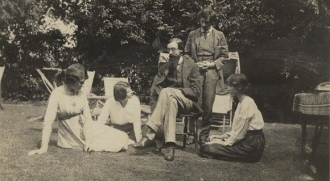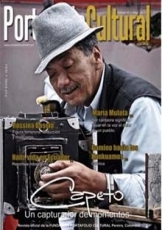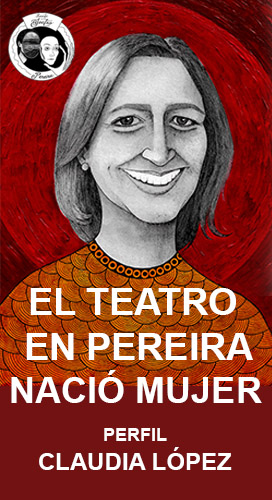
Make Your Lives Extraordinary: 5 Influential Literary Cliques
Martes 17 de Febrero, 2015

By Kelsey Osgood
*Kelsey Osgood has contributed pieces to publications including New York, The New Yorker's Culture Desk blog, Time, The New Republic and Salon. Her first book, How to Disappear Completely: On Modern Anorexia, was chosen for the Barnes & Noble Discover Great New Writers program. She is a regular contributor to the digital version of Psychology Today, and a Staff Writer at The American Reader.
Writing can be a lonely business. More often than not, it’s just you and the typewriter and the occasional sound of the postman coming by to drop off the latest rejection letter. So when writers find their friends, they hang on tight, and party hard.
Here are a few of the coolest literary cliques of all time. As the list concludes with the Beats, who were active into the sixties, we think we’re overdue for a new witty social pack. If interested, meet me at the Blue Bar on Sunday for some snack mix and gin.
The Bloomsbury Group
This group, which boasts Virginia Woolf and E. M. Forster as its most famous members, really began at the turn of the 20th century in the vaulted halls of Cambridge University. There, a few left-leaning, artistically-engaged men, including Forster, John Maynard Keynes, and art critic Clive Bell, developed strong bonds, which they maintained when they moved to London after graduation. In the early twentieth century, the group -- now with a few women in the mix -- began meeting on Thursdays and Fridays in the tiny Bloomsbury neighborhood of London. As with most literary cliques, the group decried the day’s bourgeois values, and proved their lack of conventionality by sleeping with one another and openly writing pieces supporting women’s suffrage and decrying militarism.
The Algonquin Round Table
Responsible for a good portion of the Oak Room’s revenue to this day, this group of satirists, critics and actors met for a martini (or seven) lunch at the Algonquin Hotel in New York throughout most of the 1920s. Also known as "the Vicious Circle" for their collective biting wit, the group’s banter was made familiar to the reading public through the columns, essays, and reviews they published. (Dorothy Parker, perhaps the best known of the bunch, was named to the editorial board of The New Yorker upon its founding in 1925.) In addition to drinking and making puns, the group loved practical jokes, poker, and charades.
The Lost Generation
So named by expat intellectual Gertrude Stein, the Lost Generation was a group of writers and artists who came of age during World War I, and whose art often seeks to make sense of the trauma experienced by survivors during the first truly global conflict. Though Stein named them, their name became famous after Ernest Hemingway used it in an epilogue to his successful novel The Sun Also Rises. Unlike the Inklings and the Vicious Circle, the Lost Generation didn't have regular meetings, though they often met at Stein’s Paris apartment at 27 Rue de Fleurus to view her impressive collection of Picassos and take part in literary salons. Many consider the story of the Lost Generation to be a tragedy, as two of its most successful members, F. Scott Fitzgerald and Hemingway, died relatively young while struggling with alcohol abuse and depression.
The Inklings
The Inklings was a group of literature-loving Oxford students who, from 1931 through 1949, met in dorm rooms or the local pub to share unfinished work with one another. The group had a mutual interest in the fantastic, with members C. S. Lewis and J. R. R. Tolkien going on to become the most important figures in what is sometimes called mythopoeic literature. Tolkien even included a fictional version of the Inklings in his unfinished novel The Notion Club Papers,part of the twelve-volume The History of Middle-earth. A more diverse version of the Inklings -- the original consisted only of white men -- still exists at Oxford today.
The Beats
Like the Bloomsbury Group, the Beats met at college (Columbia University in New York City), often exchanged romantic partners, and pitted themselves against the social conventions of buttoned-up fifties America. Indeed, one could argue that Jack Kerouac -- famously anti-editing -- continued the stream of consciousness tradition that Virginia Woolf helped establish decades earlier. Two of the most famous Beats, Allen Ginsberg and William S. Burroughs, found their seminal works ("Howl" and Naked Lunch, respectively) put on trial for obscenity, mostly for their description of drug use and homosexuality. There was also a West coast contingent of poets, including Gary Snyder and Lawrence Ferlinghetti, but they were never quite as high profile as their Big Apple counterparts.
Font: http://www.biographile.com/




